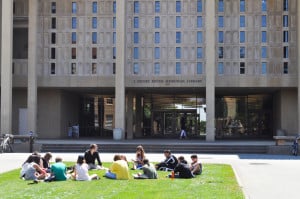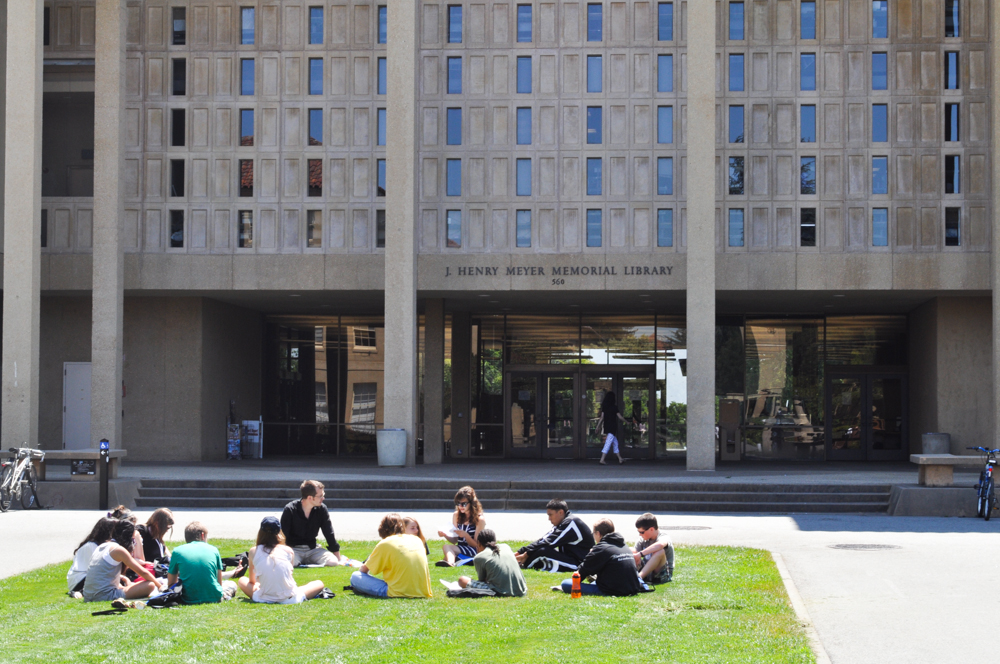Lathrop Library is currently being renovated to replace Meyer Library, which will be closed for the 2014-15 academic year and is scheduled to be demolished the following summer.
The new facility will be located in the former Graduate School of Business (GSB) South Building, adjacent to Memorial Auditorium. Renovations on the building began last summer and are scheduled for completion this quarter. The new library is named after Jane Lathrop Stanford, the co-founder of the University who also donated her jewelry collection to establish Stanford’s first library book fund.

All of the services currently available at Meyer will be moved to the new space, including the 24-hour study room, the Tech Desk, the Digital Language Lab and large format printing equipment. Featuring more outdoor spaces and natural light, a new café and a contemporary interior design, the new library will also house group study spaces and new classrooms managed by the Office of the University Registrar and the Vice Provost for Undergraduate Education.
Although the new location is farther away from Green Library and most undergraduate residential areas, library staff members are optimistic that library usage will not be affected.
“If you look at where Lathrop is, it’s actually still really convenient,” said Gabrielle Karampelas, director of communications for Stanford University Libraries. “In fact, it has better parking access, better bike parking access and the Marguerite drops off a little closer.”
The decision to raze Meyer and move its services to another location was announced in 2007 after a seismic safety evaluation found that costs of bringing Meyer into compliance with current standards would exceed $45 million. Renovating the GSB South Building into a new library proved to be a more cost-effective decision.
Although there have been rumors of Meyer’s lot being left as an undeveloped grassy area, plans for the space occupied by Meyer have not been finalized, according to Karampelas.
Movement of the East Asia Library
Lathrop Library will also include an expanded home for the East Asia Library, which contains over 680,000 volumes in the social sciences and humanities related to the Chinese, Japanese and Korean languages.
“People in East Asian Studies are very happy with the decision [to not split the collection],” said Gordon Chang ’72 Ph.D. ’87, director of the Center for East Asian Studies and member of the Committee on Libraries, a subcommittee of the Faculty Senate.
Chang praised the location of the East Asia Library, noting that the Center for East Asian Studies and the Department of East Asian Languages and Cultures are both located adjacent to Lathrop Library in the Knight Building.
“The new library is going to make a hub for East Asian Studies,” Chang said. “It’s very accessible, and there is a lot more usable space.”
“Currently, we have more than a hundred Asian Studies faculty and researchers on campus. It’s the biggest international studies area,” said Qi Qiu, assistant head of the East Asia Library. “This new library is definitely going to be an attraction to potential students, faculty and visiting scholars.”
According to Jidong Yang, head of the East Asia Library, Lathrop’s larger size and improved accessibility will allow for more events, exhibits and classes. Yang is also hopeful that the new space will improve the East Asia Library’s ability to attract potential donors.
“We are going to have a brand new special collections for the East Asia Library, which will hold a number of very precious materials,” Yang said. “And, of course, we are planning to develop the collection aggressively in future years. As a matter of fact, Stanford’s East Asia Library already has a bigger budget than Berkeley’s East Asia Library for collection development — if this continues, our collection will be bigger than Berkeley’s in about 10 years.”
The transition
The transition to Lathrop Library — to be completed in phases — will begin as soon as renovations on the new building are complete. The new library is scheduled to open before the beginning of fall quarter.
“We’re trying to keep the services open for summer, though there might be a one-week period where they won’t be accessible,” Karampelas said.
Although transition plans are nearly solidified, library staff members are still figuring out how to move one key feature of Meyer.
“Everyone is asking about the ‘Beat Cal’ banner,” Karampelas said. “We’re making sure we can still display that.”
Contact Zach Sorenson at [email protected].
